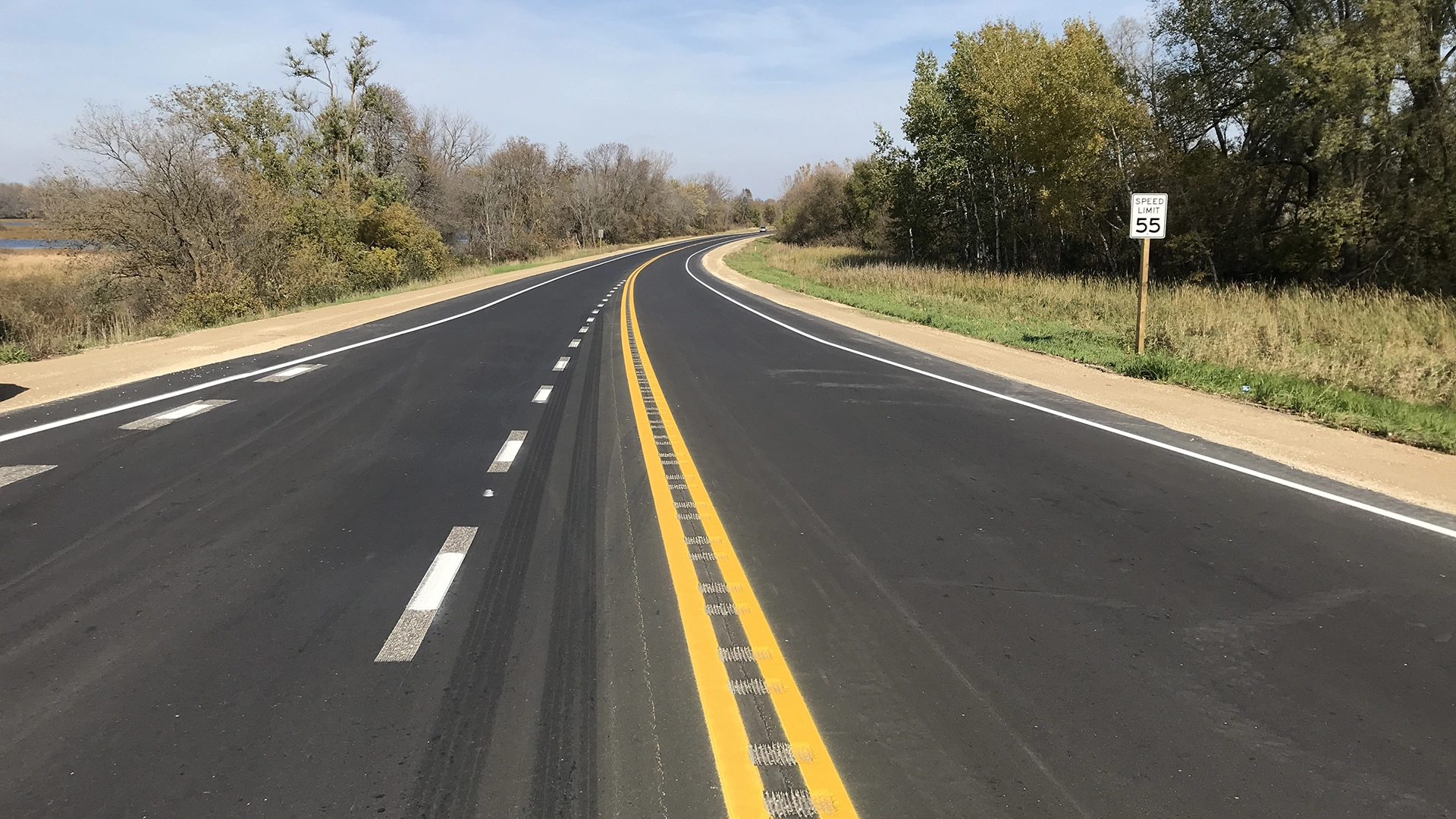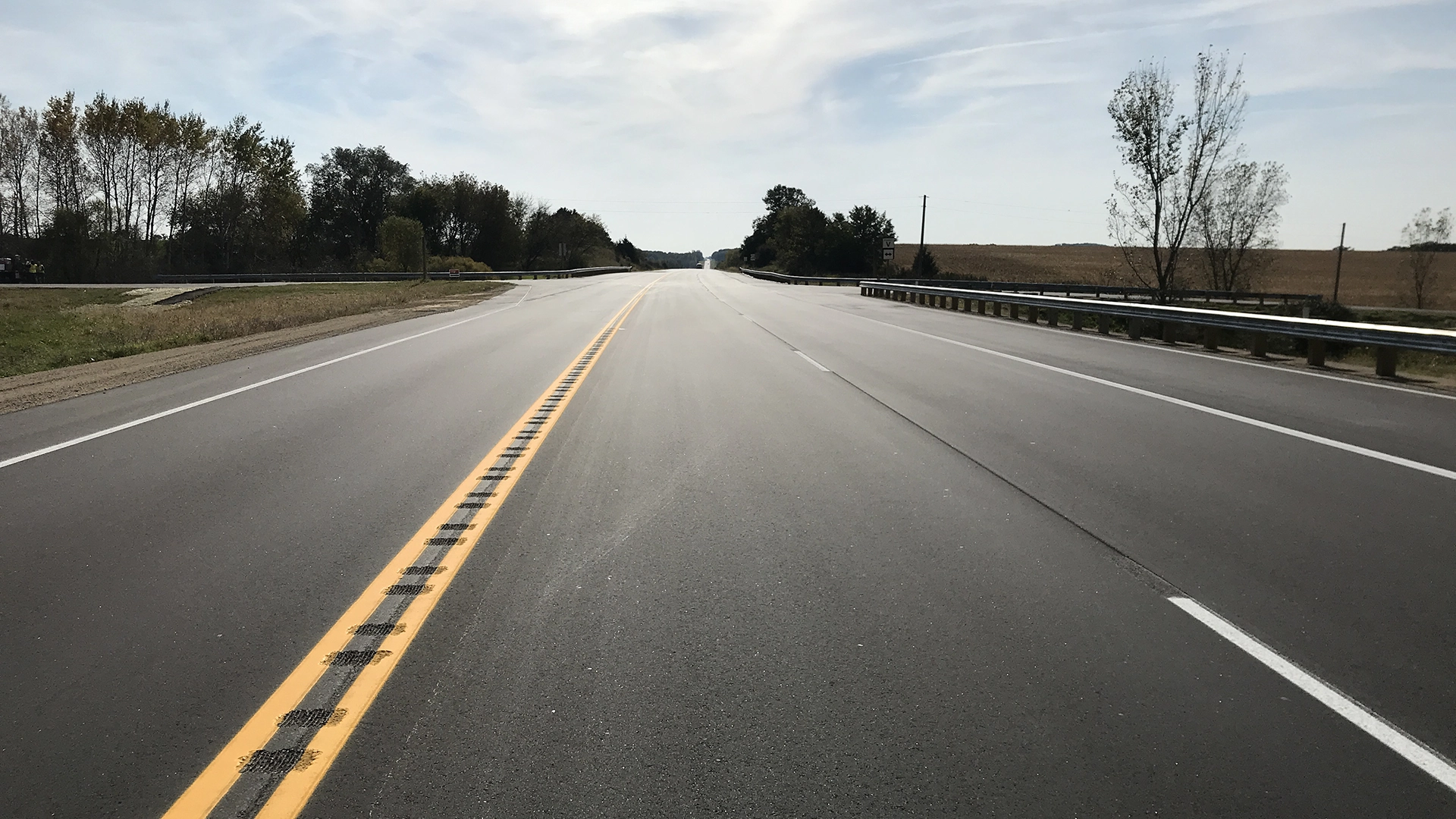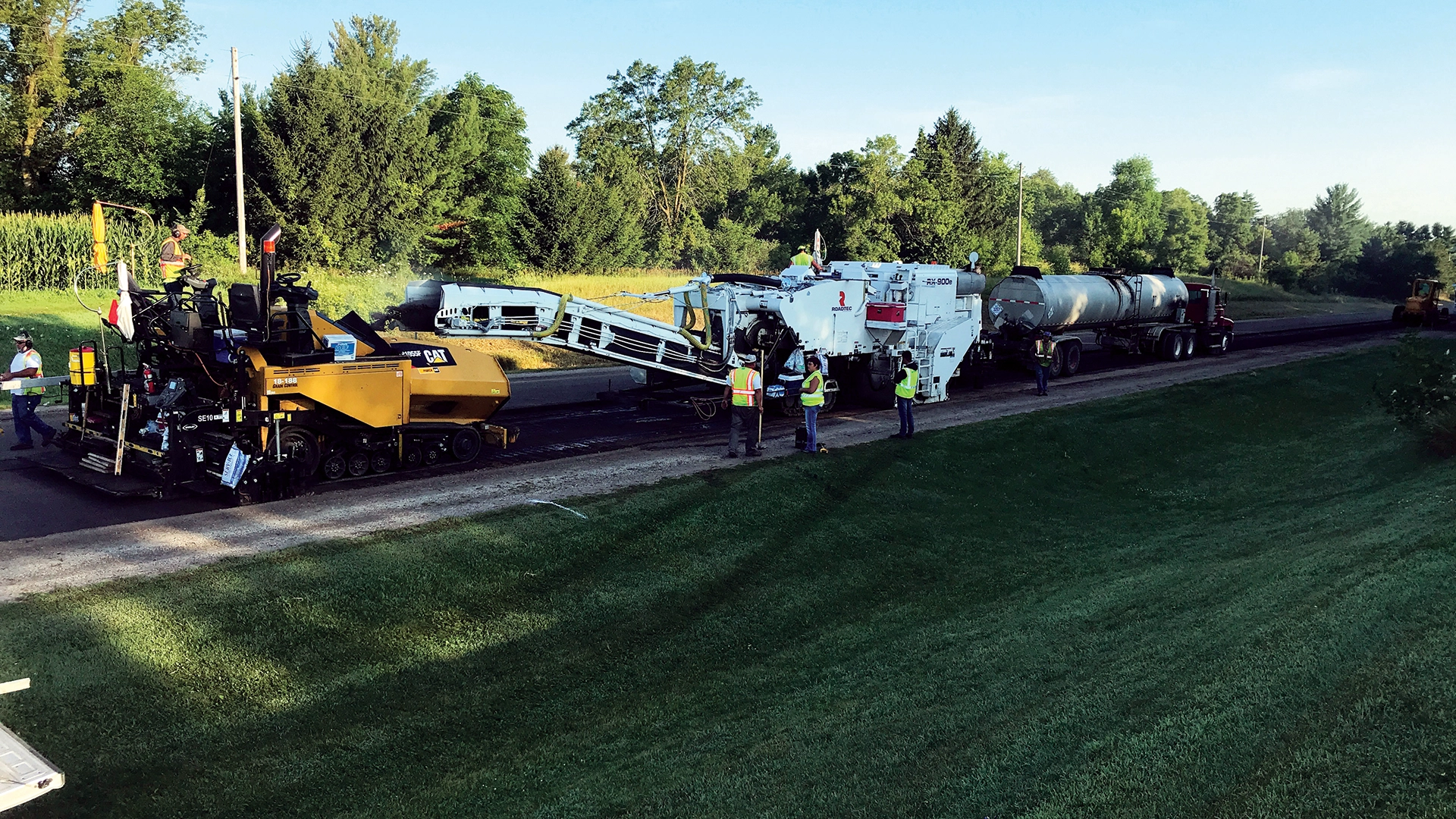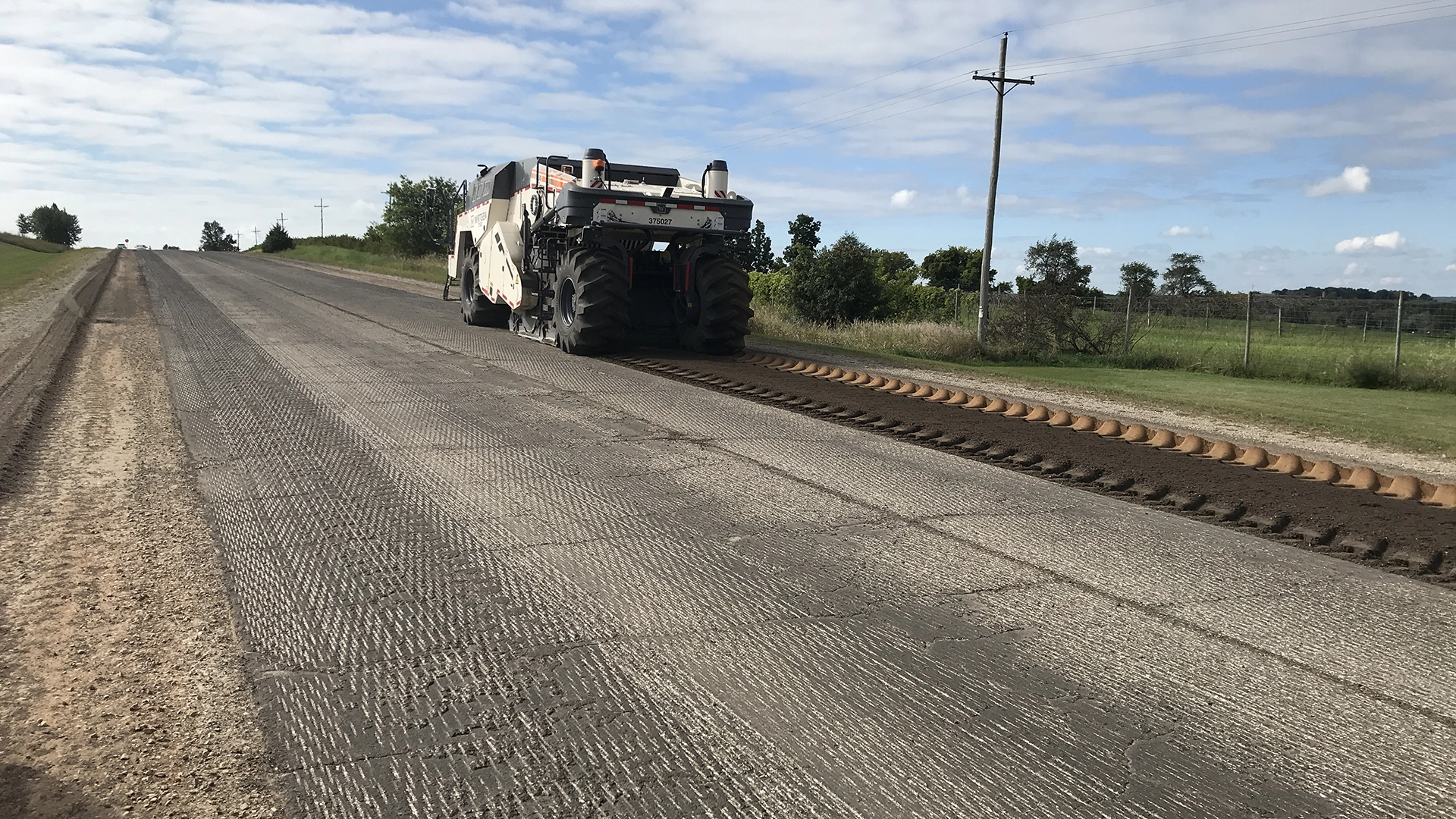Located in central Wisconsin, STH 49 is a 7.38-mile highway that was in need of repaving. A side-by-side comparison of pulverize, relay, and Hot Mix Asphalt (HMA) pavement versus mil, cold-in-place recycling (CIR) and HMA pavement was completed on the project. CIR is a method of removing and reusing the existing asphalt surface. It involves grinding off the top, in this case, 4 inches of the existing asphalt surface and mixing the crushed asphalt with an asphalt recycling agent, and placing it back down with a paver.
The project included super elevation corrections that adjusted the slope of the road in banked areas to the new WisDOT standards for slope and transition length. Intersection grade corrections, curb removal and replacements, pipe liners, and 7,720 LF of guardrail were also part of the project.
Project Challenges
Weather and flagging operations were the two biggest challenges faced on this project. Strong rain events led to multiple areas of re-work due to washouts. When trying to pave over the pulverized area, a grading crew had to be right in front of the paving crew as continuous rain, steep hills, and heavy traffic volumes led to potholes and washouts.
Heavy traffic was another significant challenge for our flagging operations. Additional flaggers and multiple lane closures were required at times. Communication between flaggers and crews was absolutely essential to ensure the project remained safe.
Collaboration Was Key
Before construction began, the team met with WisDOT to evaluate the constructability of the project. They discussed the original plan and the 23 transitions in the CIR portion of the job. A decision was made to run a constant width of 13’ wide and a constant mill depth of 2.75” throughout the CIR area to improve the overall quality of the highway.
They also discussed the plan to remove and replace shoulder material throughout the project. An alternative was proposed that allowed for the material to stay in place and new shoulder material was placed. This resulted in overall cost savings.
Lastly, milling an extra inch in the pulverized and relay section was completed to maintain the centerline height outlined as a parameter of the project.
Working Smart & Safe
Multiple passing lanes presented a challenge to our flagging operations. The team closed passing lanes during working hours and then re-opened lanes at night to ensure the safety of our flaggers in the three and four-lane areas.
Innovative & Quality-Driven Techniques
Quality is achieved through consistency and attention to detail. A spray system was developed for the bogey wheels to make sure they would not pick up the CIR as it heated up from heavy traffic or warm temperatures. To guarantee the best ride possible, the paving crew ran a 50-foot ski, versus a typical 30-foot, and shuttle buggy. This technique averages any deviations over the 50-foot section. We also followed our best practices and paved by the numbers. This sets us up to achieve consistent take off transitions and a quality ride.
The Results
The south portion consisted of a 4-inch mill, 6-inch pulverize, 2.5-inch lower 3 MT HMA and 1.5-inch upper 5 MT HMA. The north portion included 2.75-inch mill, 4-inch CIR, 1.5-inch leveling 5 MT HMA and 1.5-inch upper 5 MT HMA.
The north half of the job surface over the CIR section achieved an average of 27 International Roughness Index (IRI) and the south half achieved an amazing 20.8 average IRI. Density was also impressive with an average of 1.8 over target.
This successful project was awarded the WAPA Award for Innovation and NAPA honored the project with a 2019 Quality in Construction award. The project was also nominated as one of WisDOT’s Northeast Region’s 2019 Outstanding Highway Construction projects in the Asphalt Paving category.



